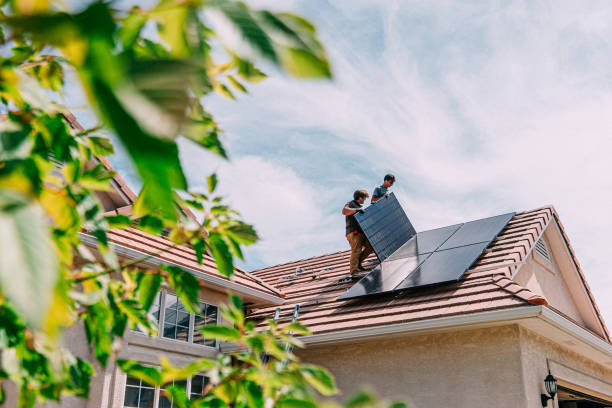Technologies of the future: smart traps and pest monitoring in USA
The future of pest control is being shaped by innovative technologies such as smart traps and advanced monitoring systems. These solutions offer precise tracking, early detection, and efficient management of pest activity across residential and commercial spaces in the USA.

How are smart pest traps revolutionizing pest control?
Smart pest traps are at the forefront of advanced pest control technology, offering a more intelligent and targeted approach to pest management. These devices use sensors, cameras, and connectivity features to detect and capture pests while providing real-time data to pest control professionals. Unlike traditional traps, smart traps can distinguish between different types of pests, allowing for more precise interventions and reducing the need for broad-spectrum pesticide applications.
One of the key advantages of smart pest traps is their ability to send instant notifications when a pest is detected or captured. This immediate alert system enables pest control professionals to respond quickly, preventing small infestations from escalating into larger problems. Additionally, many smart traps are designed to be more humane, using non-toxic methods to capture pests, aligning with the growing demand for eco-friendly pest management solutions.
What advancements have been made in pest monitoring technology?
Pest monitoring technology has evolved significantly, moving beyond simple detection to provide comprehensive insights into pest behavior and population dynamics. Advanced monitoring systems now incorporate a range of technologies, including infrared sensors, acoustic detectors, and artificial intelligence algorithms. These tools work together to create a more complete picture of pest activity within a given area.
One notable advancement is the use of pheromone-based monitoring systems. These devices emit specific pheromones to attract target pests, allowing for early detection and more accurate population assessments. When combined with data analytics, these systems can predict potential outbreaks and help pest management professionals develop proactive treatment strategies.
How is advanced pest control benefiting residential and commercial properties?
The integration of smart traps and monitoring technology into pest management solutions USA has led to more efficient and cost-effective pest control for both residential and commercial properties. For homeowners, these advanced systems provide peace of mind through continuous monitoring and rapid response capabilities. Residents can receive alerts on their smartphones when pest activity is detected, allowing them to take immediate action or contact professionals for assistance.
In commercial settings, such as restaurants, warehouses, and healthcare facilities, advanced pest control systems are proving invaluable. These technologies help businesses maintain compliance with health and safety regulations by providing detailed documentation of pest control efforts. Moreover, the precision offered by smart systems minimizes disruptions to business operations and reduces the reliance on chemical treatments, which is particularly important in sensitive environments.
What are the latest trends in pest management solutions USA?
The pest management industry in the United States is increasingly embracing digital transformation to enhance service delivery and customer satisfaction. Cloud-based platforms are becoming more prevalent, allowing pest control companies to manage their operations more efficiently and provide clients with real-time updates on treatment progress.
Another emerging trend is the use of predictive analytics in pest management. By analyzing historical data, weather patterns, and other environmental factors, pest control professionals can anticipate potential infestations and implement preventive measures. This proactive approach not only improves the effectiveness of pest control efforts but also helps reduce the overall use of pesticides, aligning with growing environmental concerns.
How is residential pest control evolving with new technologies?
Residential pest control is experiencing a significant shift towards more personalized and tech-driven solutions. Homeowners now have access to a range of smart devices designed for DIY pest monitoring and control. These include connected insect light traps, ultrasonic repellent devices, and even smartphone apps that can identify pests through image recognition technology.
Professional pest control services are also adapting to incorporate these new technologies into their residential offerings. Many companies now provide integrated pest management plans that combine traditional methods with smart monitoring systems. This approach allows for more targeted treatments, reducing the need for widespread pesticide application and minimizing the impact on non-target organisms.
What is the future outlook for smart pest control technologies?
The future of pest control in the USA looks increasingly sophisticated and environmentally conscious. As artificial intelligence and machine learning continue to advance, we can expect even more accurate pest detection and prediction models. Drones and robotics may also play a larger role in pest management, especially for large-scale agricultural applications or in hard-to-reach areas.
Sustainability will likely be a key focus, with ongoing development of bio-based pesticides and traps that are both effective and environmentally friendly. The integration of smart pest control systems with other smart home technologies is also on the horizon, creating a more holistic approach to home management and environmental control.
As these technologies continue to evolve, they promise to make pest control more efficient, less invasive, and more in tune with ecological considerations. While traditional pest control methods will still have their place, the shift towards smart, data-driven solutions is set to redefine the industry landscape in the coming years.




